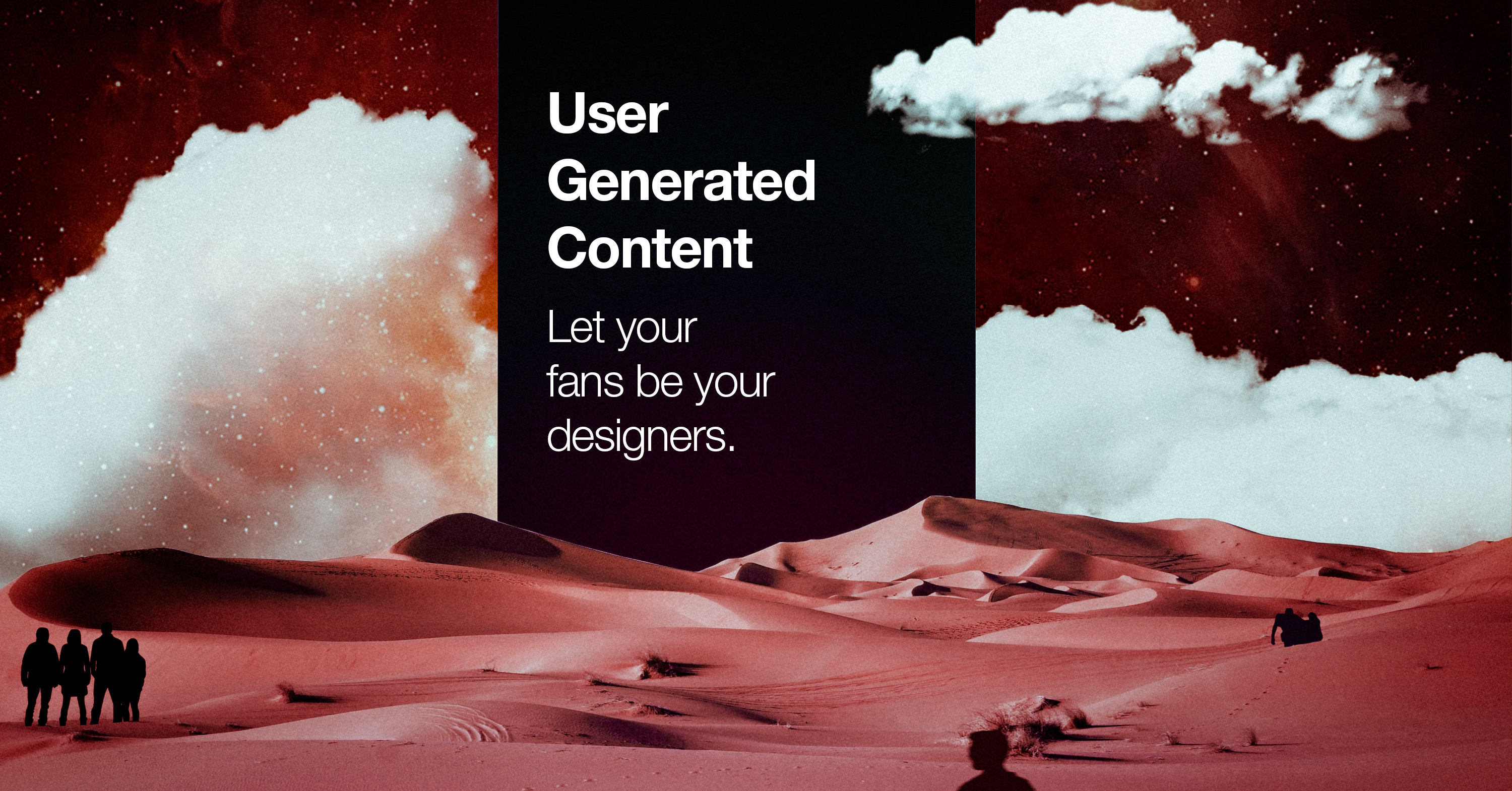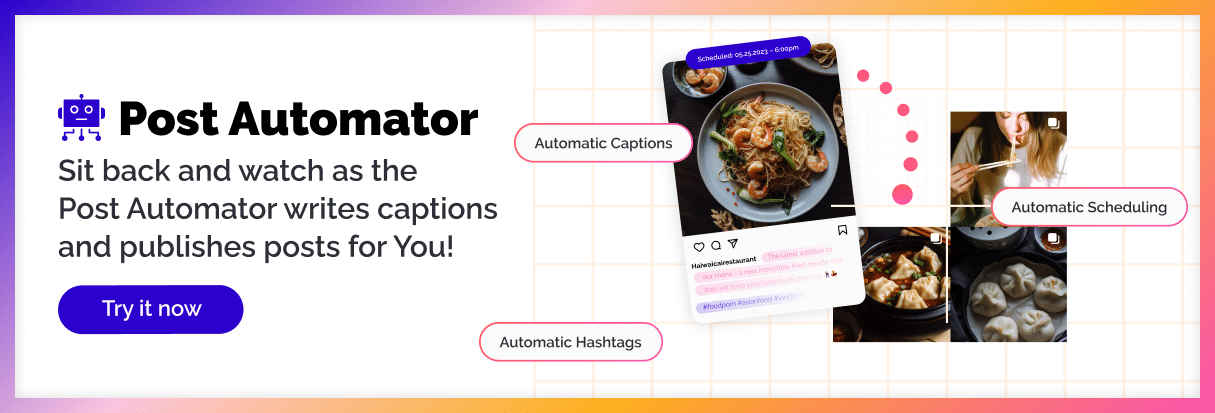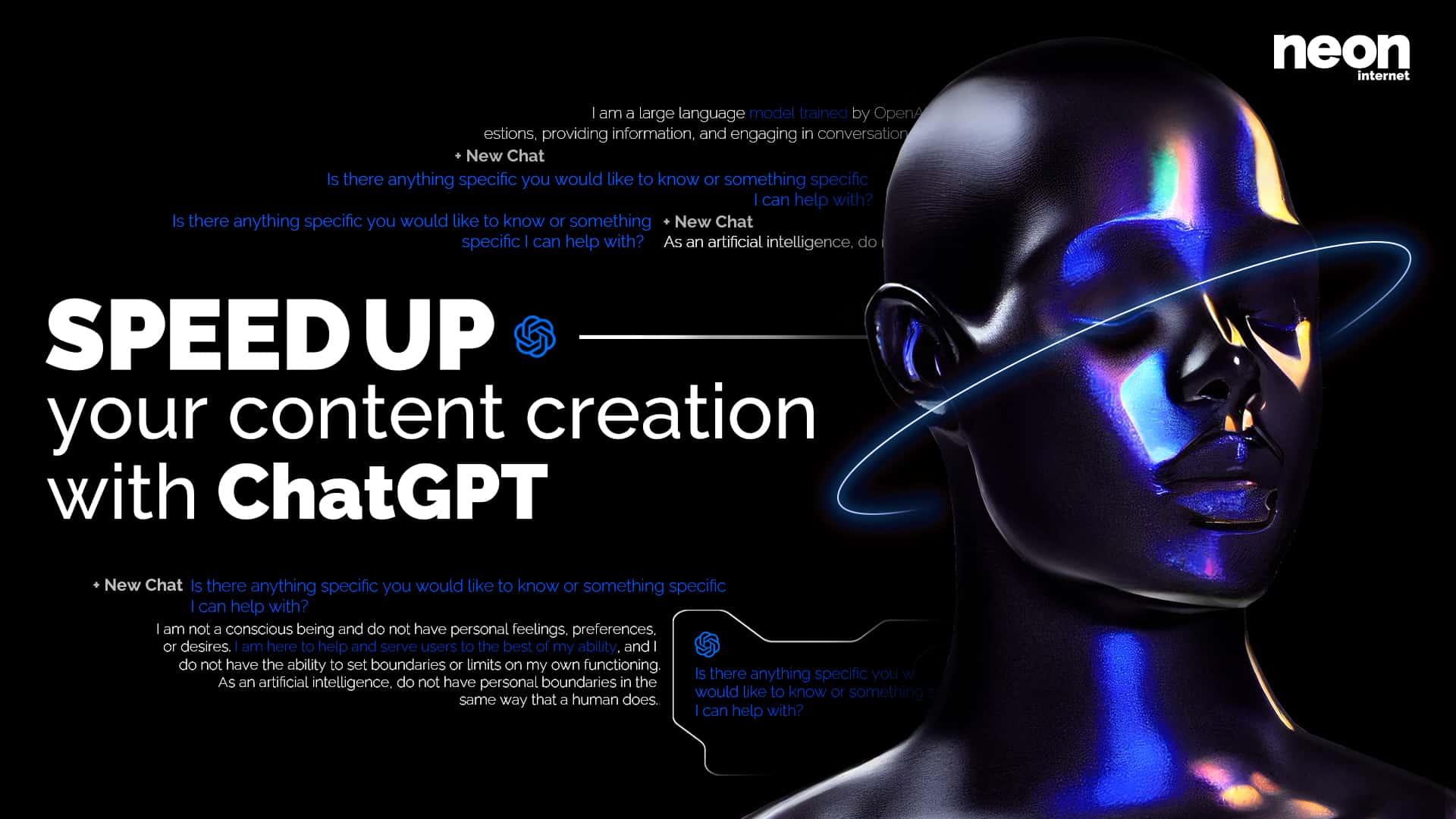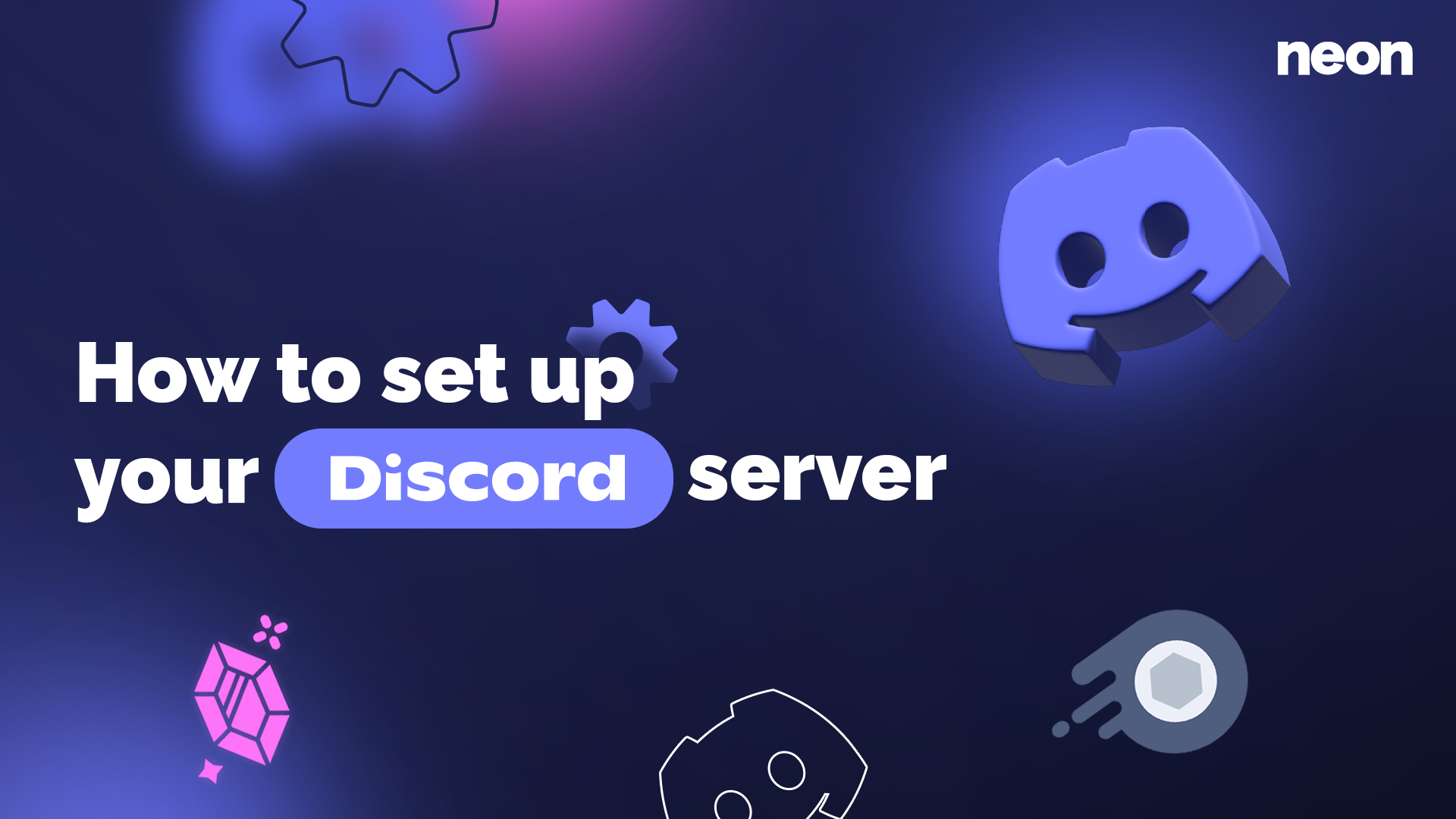User-Generated Content, or short UGC, can be a very powerful approach to bring your business’s Social Media presence to a new level. Not only does the majority of consumers value UGC higher than regular brand-posts or promotions, it’s also cheaper to produce (or rather “use”) and super convenient to share with your followers and fans.
Since it’s easier to influence the average consumer with organic content created by other users, you might be missing out on an effective marketing strategy if you’re not working with UGC.
User-generated content, what does it mean?
User-generated content are images or videos that were created by your followers, fans or clients and are directly related to your brand, products or services.
Usually, the creators were not paid to post and if you’re lucky they only posted because they genuinely love your services and want to recommend it to their friends. Of course, it could also be a paid Influencer that is tagging you or your products in their Instagram Stories or posts. But keep in mind that organic user-generated content generally does a better job of convincing new users. According to recent studies 76% of users find content posted by other consumers to be more honest than content that comes directly from the brand.
Example: You are selling candles. Many of your clients post beautiful pictures of the candles on their Instagram accounts and mention directly or through hashtags. For the future, you could start to gather the best photos and ask the creators if you can re-use their content on your brand’s Instagram profile.
This way you get quality content, that is associated with your brand, for free. Furthermore, you are automatically engaging and interacting with your community and have the chance to show how much you appreciate them.
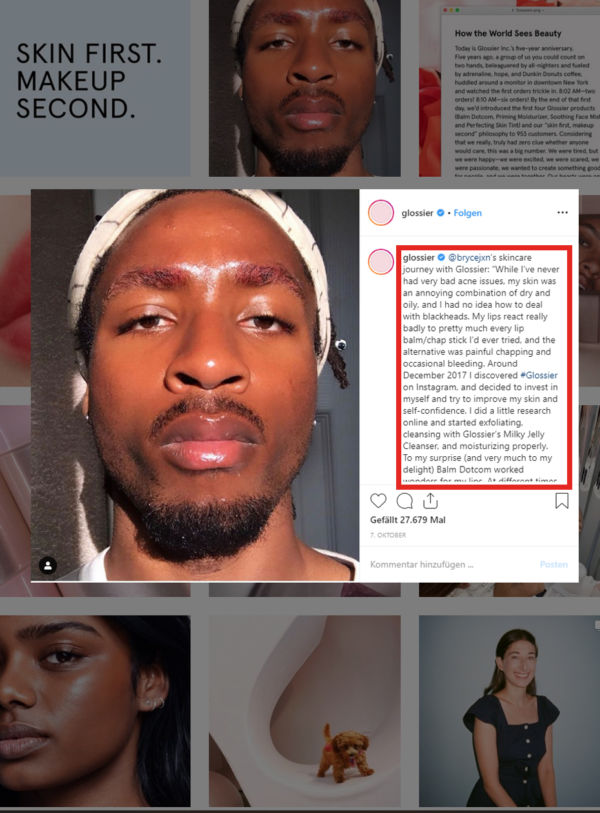
How and why does it perform so well?
As we just mentioned, reaching out to your fans and asking to use their content is an active form of relationship management. 54% of millennials want their friends and also the brand to know how much they like a certain product. As soon as said brands react to the mentions, users automatically feel cherished.
Just for one moment, think about a brand that you like and how flattered you would be if they wanted your content on their page. This is exactly why UGC works so well. You are embedding your community into your online presence, and additionally, showing new visitors how many customers enjoy your products. There is no better review you could wish for than a customer personally praising your brand online in front of their friends.
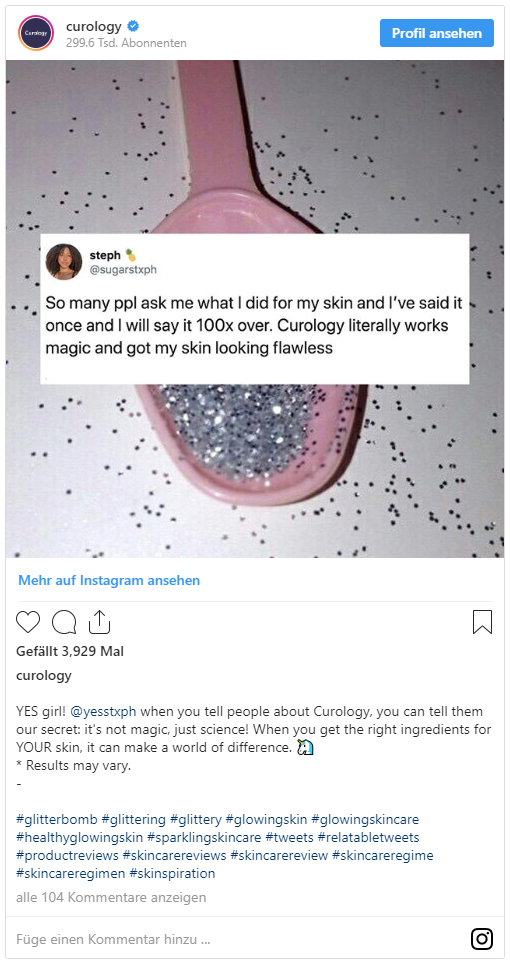
As Adweek disclosed, more than 50% of millennials base their decision to buy a product on recommendations from their family and friends. This is where UGC can shine since it is exactly that: a personal recommendation. And as if that wasn’t enough, the majority of users trust UGC more than any other form of marketing.
Platforms like TikTok have elevated the importance of UGC to another level by creating a proper ad format for it: The Hashtag Challenge Ad-Format. The Hashtag challenge counts on the audience’s urge to create and respond with their own content. Usually, the users have to record themselves while doing a determined action. They then have to upload the video to Tiktok and link it with the correct hashtag. Overall 35% of users participate in this kind of challenges and an impressive 16% of all the videos are related to hashtag challenges.
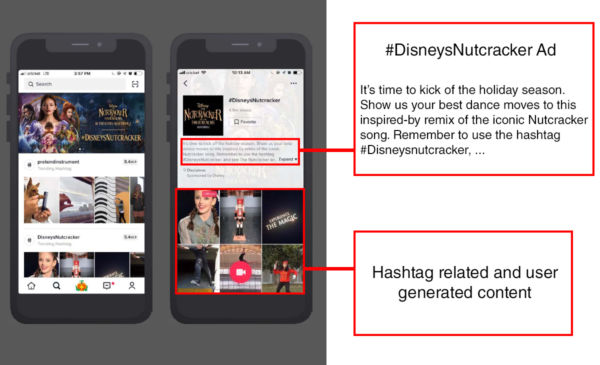
Brief, user-generated content is:
- cheap/free to produce and share
- enhancing the relationship with your customers
- a genuine review of your products
- bringing you traffic from all the different user-communities
How to find UGC
There are a couple of approaches to search the vastness of Instagram, TikTok, Snapchat and co. for related UGC.
The easiest is obviously if your clients already know your account and mention you in their posts. Hence, you’ll be notified about said posts and can have an eye on fitting content simultaneously.
Another efficient way are hashtags. In the ideal case, you can create and establish a very own hashtag that is only related to you or a specific product of yours. Thereby you don’t have to rummage through hundreds of irrelevant pictures. Pick a fitting hashtag that doesn’t seem to be bound to a rival, or that isn’t used a lot by that time.
Depending on the size of your company, both standard procedures can easily become overwhelming and a bunch of work.
Tools like Talkwalker allow you to search Social Media platforms for content that contains logos and products. Their image-recognition is based on a database of over 30.000 brand logos and even works for TV and video in general.
Moreover, you have the possibility to reward your fans for their great content, and at the same time encourage them for the future, by organizing giveaways in return. If they treasure you, they’ll probably participate in such a competition and create tons of great content without one noticing it. If you’re creating such a competition, make sure to put in place a dedicated campaign hashtag, like for example RedBull with #PutACanOnIt. Be aware though, that even if your fans mention you on their posts or if they use your branded-hashtags, you are not automatically allowed to use their content for your own purposes.
How to legally re-use UGC
Whenever you take someone’s creation and share it on your account, you are entering the territory of laws and regulations on intellectual property and copyright infringement. It should go without saying, that you can’t simply take a post from somebody else and straight put it to your Social Media accounts. Many influencers are trying to make a living with their content. Taking it without their permission is nothing less than stealing their time and money. Luckily, there is a simple way to legally repost the content from other users on Instagram.
So, what is the “correct” approach here?
To keep it short: just ask. Give credit where credit is due. You have to make sure that you are mentioning and paying tribute to the creator and the incurred expenses.
- You could directly message the creator and ask them for permission:
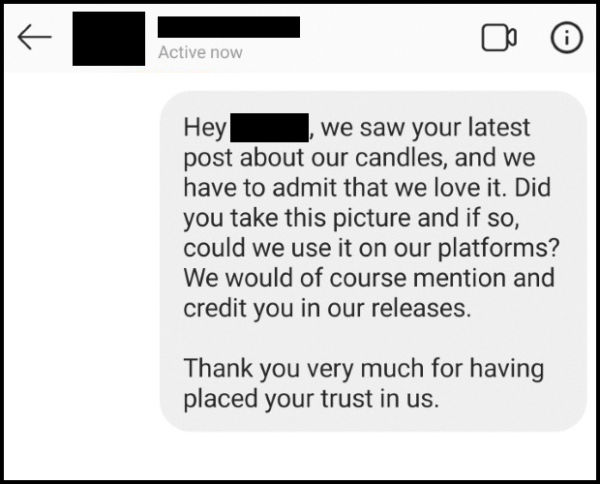
- Or comment on the picture and let the creator grant you a written permission:
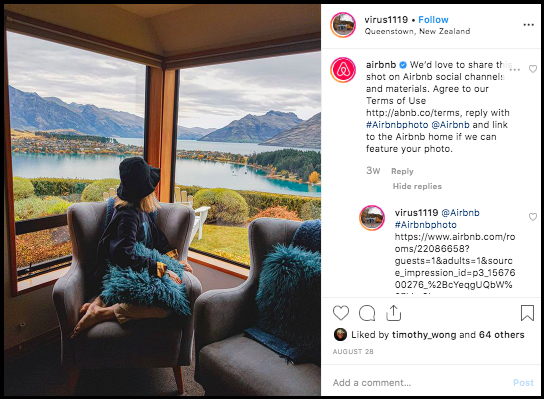
Above all, it is crucial to correctly credit the creator once you received their permissions. In the end, this is the most important part, because it is your official release of someone else’s content.
To avoid any kind of misunderstanding, here are a few best practices on Instagram, that can equally be applied on other social networks as well:
1) Start by tagging the creator in the image. This will notify and simultaneously make them the center of your post.

2) Also, mention the creator in your caption and explain what this post and re-use is all about.
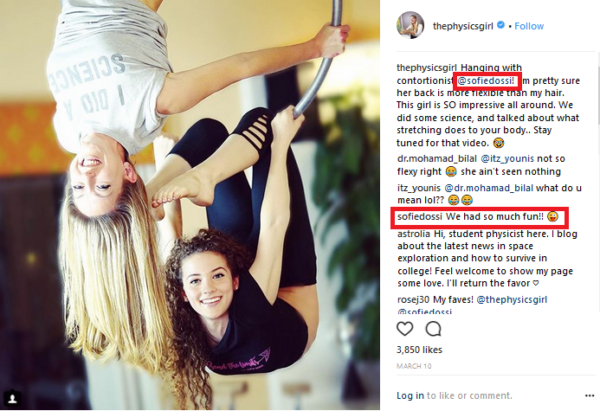
3) Make sure that your mentions are actually visible and accessible, and not somehow hidden. You want the credits to be distinctly and visible.
Creative UGC campaigns
To give you an idea, how you can use user-generated content to boost your Social Media presence, we will show you some great campaigns from the past that performed (and still perform) well with UGC.
TikTok currently is the champion of User Generated Content. Search for any hashtag and you can be almost sure to find a related “Challenge” with it.
Below a few UGC campaign examples:
#haribochallenge
Arranging hundreds of gummy bears as a crowd while Adele’s “Someone Like You” plays in the background.
Can you think of a better way to advertise haribos?
#faketravel
Not a company campaign hashtag, but still a huge opportunity for travel agencies: #faketravel calls for people to post fake videos of them traveling. Why not make use of this trend as a travel company and pick up some of the best videos?
#Adobe_BeautyInChaos
With this campaign, Adobe gave talented designers the chance to get featured on their Instagram Page. The only requirement: the artwork had to be created using any of the Adobe products such as Photoshop or Illustrator. Adobe used the generated content to showcase the designing capabilities of its software and to share user recommendations.

#WhiteCupContest
Back 2014, Starbucks called on its customers to paint their white cups and share the pictures. At the same time, they launched a contest under the hashtag #WhiteCupContest. Starbucks announced that the best drawing submitted would be used as a limited edition design for their cups. Within a couple of weeks, this contest accumulated thousands of pictures that could have been used.
They’re also doing this for other cup colors on a yearly basis, like for example the infamous #RedCupContest.

Share your neontools content with us!
We actually do have our own UGC Instagram hashtag campaign running at this time: #neontools.
It’s related to our online marketing toolbox neontools.io and its free hashtag analyzer.
Feel free to show us your support with the hashtag #neontools on Instagram when using our hashtag tool <3
